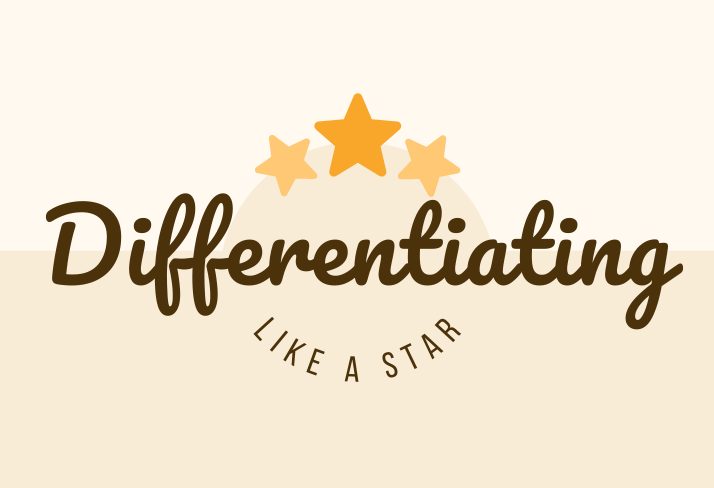|
Find practical ways to strategically customize learning pathways for your students.
Differentiating Instruction is the practice of customizing instructional resources, tasks, texts, and topics to meet the needs of students with different learning levels and academic needs. With good intentions, curriculum developers identify grade level expectations and design unit and lesson plans with the ideal student in mind. Those ideal students started the year meeting grade level expectations, speaking the language with fluency. They all attend class every day and comprehend the lesson at proficient standards. They carry with them all the skills from the last unit into the next, and they learn at an even pace throughout the school year.
The problem is that these ideal classes don’t actually exist! This is why it’s so important to differentiate instruction. Students can’t learn when the course material is too difficult — they get frustrated, insecure, and eventually develop avoidance behaviors that cause learning disruptions or disengagement. But the flip side is also true — students can’t learn when the material is too easy! When there is no learning challenge, students get bored, overconfident, and they also develop avoidance behaviors resulting in learning disruptions or disengagement. Differentiating instruction is about the art and science of matching students with their just-right task, text, and topic. When we begin thinking about what we need to know about our students to effectively differentiate, it can get very overwhelming very quickly. The idea of creating a unique lesson for 30 students 4-5 times a day is an insane amount of work. The good news is that highly effective differentiation doesn’t mean that we have 30 different lesson plans — but it does mean we are using data to inform instruction, and customizing learning pathways strategically for our students.
Differentiating deliberately
There is no one perfect way to differentiate instruction, which is one of the things that makes it challenging. Because there are so many options and opportunities for learning, it’s easy to become overwhelmed with all of the different types of choices that can be made when customizing instructional materials for our students. Our Differentiating Like a Star resource is designed to help you streamline your thinking process, and provides a dynamic menu of options for teachers to use while planning differentiated lessons. On the matrix, there are four styles of differentiation: by data, by task, by text, and by team or group. The matrix provides recommended differentiation strategies aligned with each approach, and increases in complexity and effectiveness. If you are able to implement any strategy on the matrix, you’re differentiating! The goal is to develop our practices so that we not only use multiple differentiation strategies, but use them deliberately to meet a specific learning goal.
Tips & tricks
Differentiation done well appears effortless, but it takes a lot of work behind the scenes. Careful planning, analyzing student work, and setting clear learning objectives can help us to develop a pathway of differentiated experiences that are targeted to meet students’ needs.
|
|
The Center for Professional Education of Teachers (CPET) at Teachers College, Columbia University is committed to making excellent and equitable education accessible worldwide. CPET unites theory and practice to promote transformational change. We design innovative projects, cultivate sustainable partnerships, and conduct research through direct and online services to youth and educators. Grounded in adult learning theories, our six core principles structure our customized approach and expand the capacities of educators around the world.
|
ABOUT US
525 West 120th Street, Box 182 New York, NY 10027 416 Zankel Ph: (212) 678-3161 [email protected] Our Team Career Opportunities |
RESOURCES
Professional Articles Ready-to-Use Resources Teaching Today Podcast Upcoming PD Opportunities |
COACHING SERVICES
Custom Coaching Global Learning Alliance Literacy Unbound New Teacher Network Student Press Initiative |


























